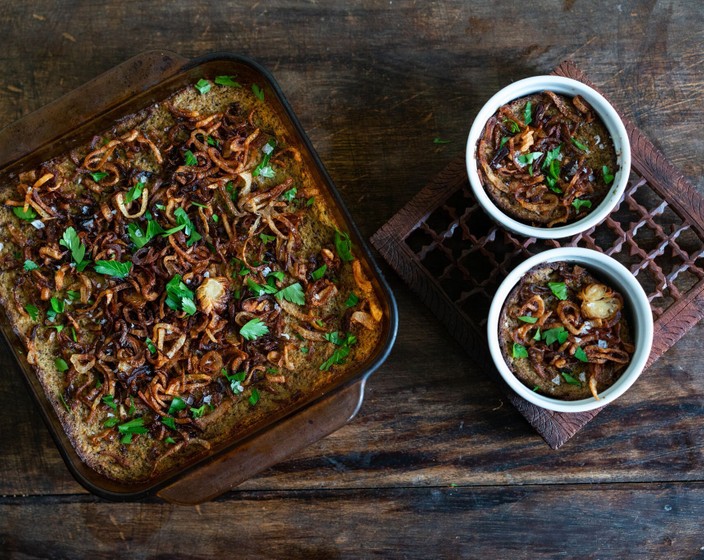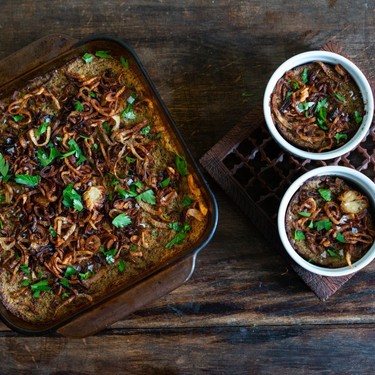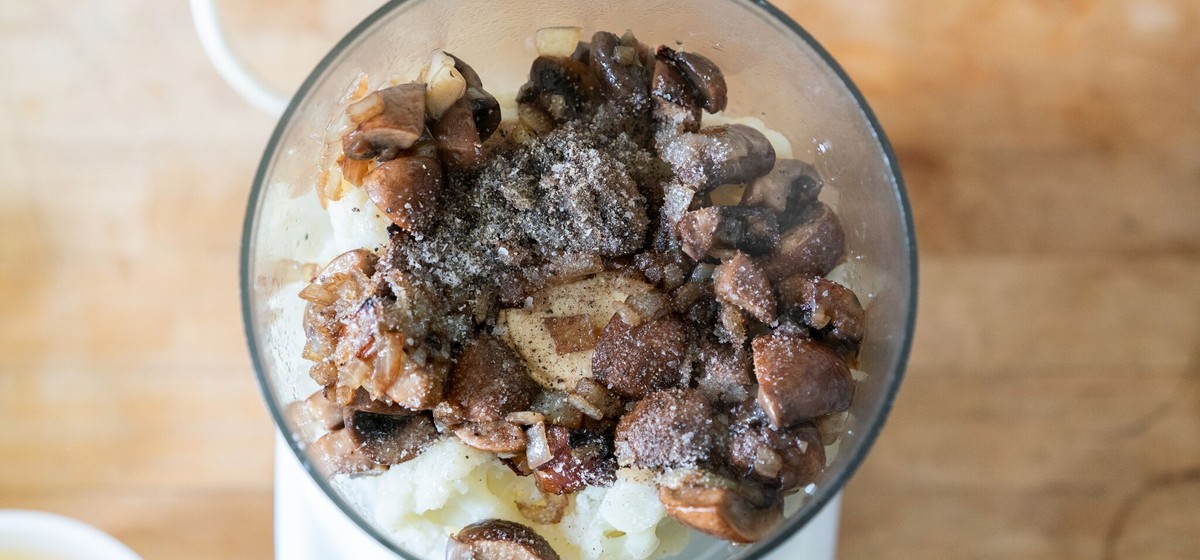Mushrooms: The Secret Flavor Agent of the Ashkenazi Jewish Kitchen




Photo credit: Liz Alpern and Jeffrey Yoskowitz
Entering the professional culinary world a decade ago, the message from our colleagues was clear: Ashkenazi Jewish cooking is bland and boring. This was tough for us to hear, considering that the cuisine of Central and Eastern European Jewry was the cuisine of our families and our culture. What’s more, we would never have used the words “bland” or “boring” to describe the Passover seders of brisket, matzo ball soup, and gefilte fish with horseradish relish, or High Holiday meals of beef-stuffed cabbage or kreplach (dumpling) soup. Nor would we consider pastrami sandwiches with spicy deli mustard and sour pickles to be lacking in flavor.
These foods, in their own way, inspired us both to enter the food world. Having grown up in the NYC 'burbs and New Jersey respectively, we both found our careers through the cooking of, or writing about, Ashkenazi food. And as the two of us read article after article on the death of the Jewish deli, we both felt drawn to take more action. We eventually met through mutual friends and discovered our shared belief that this cuisine needed PR makeover. Where to start? We turned to one of our greatest inspirations from Ashkenazi cuisine: mushrooms.

Mushrooms--earthy, hearty, deep--were a primary flavor agent for generations of cooks in Poland, Ukraine, Lithuania, Russia, and beyond. Part of what made them so ubiquitous was the fact that they could be foraged from the forests, free of charge. Throughout the centuries, Ashkenazi Jews were often confined to settle in particular geographic regions and hold only limited kinds of jobs. This type of discrimination meant that, by and large, Ashkenazi Jews were minimally resourced and had to rely on their own skills and resourcefulness to survive. Foraging for mushrooms, as well as berries, greens, etc., was a brilliant hack, a practice done by their non-Jewish neighbors as well. The best mushroom foragers, often women, would gather extras after a rain spell and hawk them at markets.
Among the types of mushrooms cooked by Jews in Europe, porcinis (often referred to as cèpes, from the French) were quite common. Even after Jews immigrated to North America, where they relied on mostly North American ingredients for cooking, there was a robust mushroom trade for imported porcinis from the Old World. “Mushrooms were one of the few things they [Jews] bothered to bring in from the Old Country,” explains food historian Jane Ziegelman in her book, 97 Orchard, when describing Houston Street’s small wholesale mushroom exchange district in early Twentieth Century New York City.
Over time, and in large part due to assimilation, the mushroom district on Houston Street went out of style and Ashkenazi Jewish cooks began shopping at the supermarkets alongside their American counterparts. Until somewhat recently, only white button mushrooms were widely available in large groceries, while quality mushrooms became expensive and gourmet in the US, especially dried varieties.
Often, on Passover today, Jewish families serve potato kugel, a sort of dense and oily casserole of potatoes, egg, and onion, sliced and served into little squares. When it’s not Passover, most Americans think of kugel as a sweet noodle casserole. However, kugel is a catch-all category of casserole-like dishes that can be made from all sorts of ingredients, mainly vegetables or noodles. Our cauliflower-mushroom kugel is light and delicate and bursts with umami from the mushrooms. While porcinis are commonly part of the tradition, we always favor local mushrooms whenever possible. In Seattle, we once used black trumpet and hedgehog mushrooms for our kugel, another revelation.
Passover’s the time of year when Jewish chefs and home cooks engage with their family’s culinary traditions, so what better opportunity to really change the perception of Ashkenazi food? When considering what flavors you want to emphasize during your seder, think of the mushroom in all its mycological glory. While biting into a delicious burst of umami, remember that this flavor was once a defining flavor in Jewish history.